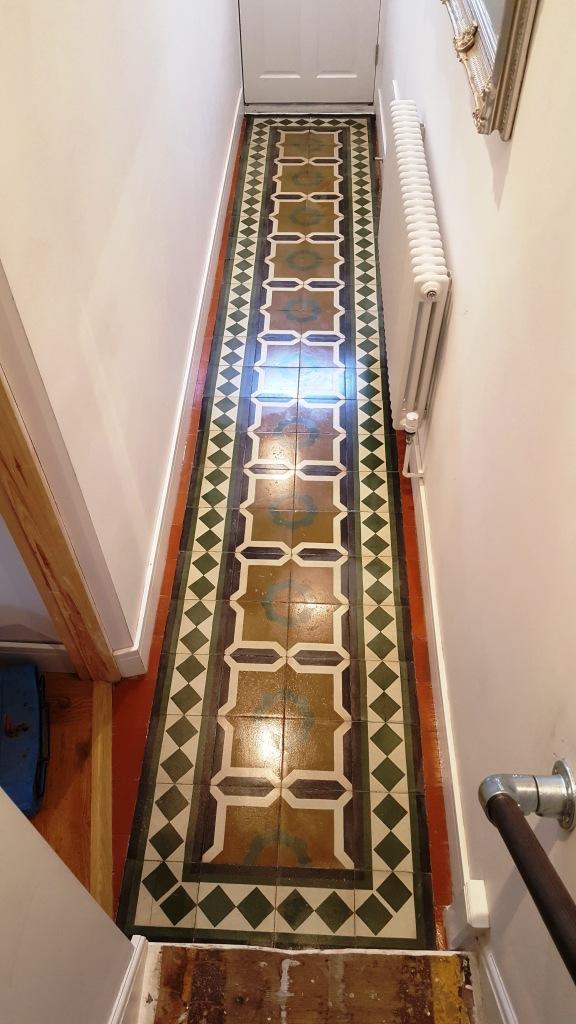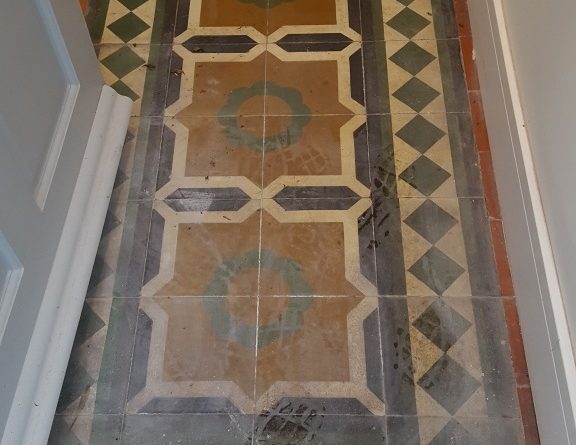Restoring an Encaustic Tiled Hallway Hidden Under Carpet in Cheshire
This floor may look like it’s made from Victorian tiles but if you look closely you will see the floor is actually made of 72 Encaustic tiles each one containing a regular pattern. Encaustic tiles have more in common with Ceramic tiles than Victorian and are actually made using layers of cement where are often hand painted with patterns which and hydraulically pressed into the surface.
 |
 |
The tiled floor was actually floor found hiding under the hallway carpet by the new owners of the house which is in Padgate near Warrington. Were not sure of the age of the tiles but suspect they may be 100 years old. Certainly, Padgate has many older houses so they could be although it’s mainly known for its large RAF base during the 2nd world war.
Encaustic tiles are porous and so need to be sealed to protect them from dirt becoming ingrained in the floor. However, hallway floors get a lot of foot traffic which over time wears down the sealer until it becomes so thin and patchy it’s no longer effective. As a result, you need to regularly top up the sealer or every three to four years it will need to be stripped off and reapplied.
Deep Cleaning the Encaustic Tiled Floor
You can see from the pictures that the tiles were in good physical shape but had accumulated a lot of dirt which was especially visible near the front door. As I mentioned earlier Encaustic tiles being made from cement and need to be sealed in order to protect them from dirt becoming in trapped in the pores of the tile.

These tiles would need a deep penetrative clean to extract the dirt, so my first course of action was to apply a strong dilution of Tile Doctor Pro-Clean across the floor and left it to soak into the tiles for ten minutes. Pro-Clean is a very effective alkaline product that’s safe to use on tile, stone and grout and is designed for tile cleaning. It was then worked into the tile using a black scrubbing pad fitted to a floor buffing machine and the soiled cleaning solution extracted off the floor with a wet vacuum.
I then used a set of diamond encrusted burnishing pads to restore the surface or the encaustic tiles starting with the 400 and 800 grit pads and lubricated with a little water. This also dealt with other deposits on the floor left behind from the carpet. I rinsed the floor with water to remove the slurry and then finished the burnishing process by applying the 1500 and 3000 grit pads to really restore the shine to the tiles.
Sealing the Encaustic Tiled Hallway Floor
To seal the floor and grout I applied Tile Doctor colour grow which is an impregnating sealer that enhances colour and soaks into the pores of the encaustic tile to protect it from dirt becoming ingrained into the tile in future. Any sealer not taken up by the pores of the tile is rubbed off afterwards.
 |
 |
The transformation was quite remarkable and as you can imagine my customer was over the moon when he returned from work.
Source: Encaustic Tile Cleaning and Renovation Service in Cheshire
